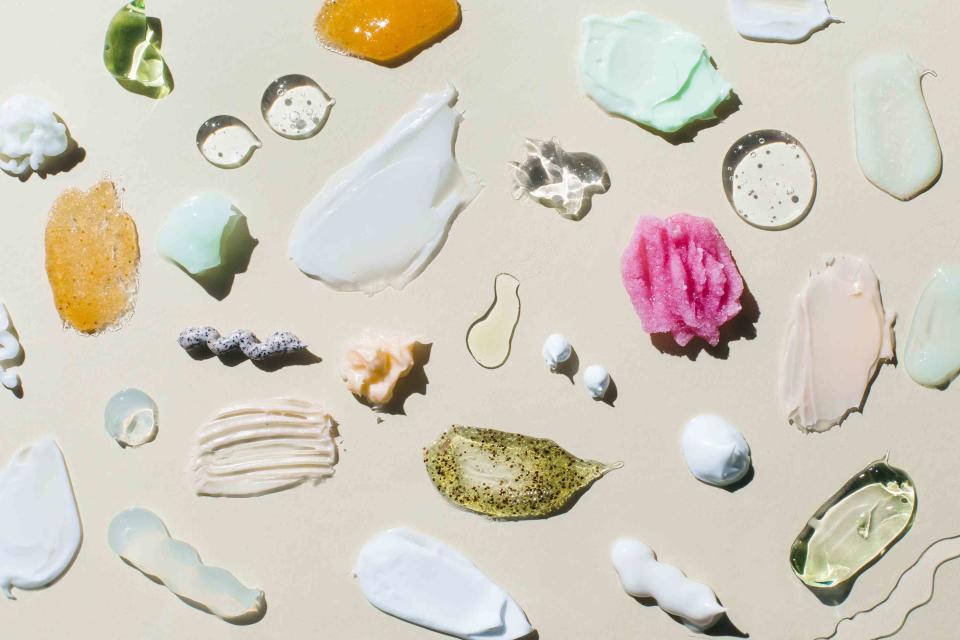What Is Skin Cycling, the Derm-Endorsed Skincare Routine Going Viral
Time to revamp your nightly regimen.

Tanja Ivanova/Getty Images
It is no secret social media is home to many a viral beauty craze. For the most part, videos that get the most views have the wildest concept (never forget squiggle eyebrows or snail facials). However, a dermatologist-developed skincare routine called skin cycling that's been trending on TikTok lately doesn’t involve out-of-this-world ingredients or unconventional applications. In fact, it has the legitimacy to go from fad to fixture in your regular skincare regimen.
Ahead, we break down what exactly skin cycling is and how to incorporate it into your beauty routine.
What Is Skin Cycling?
“Skin cycling is a strategic method for cycling through your evening skincare products to maximize results and minimize irritation,” says Whitney Bowe, M.D., board-certified dermatologist and creator of the skin cycling method.
While many popular skincare methods require upwards of 10 products, skin cycling prefers to keep it simple. Essentially, skin cycling is a skincare routine that requires rest days in between your active ingredient-laced treatment products to allow your skin’s microbiome to recover.
Why is this helpful? Acids and retinols are excellent resurfacers, but overuse of these ingredients irritates and exacerbates the skin. “When it comes to exfoliation, more is not better,” says Dr. Bowe. “Over-exfoliation can compromise the health and integrity of your skin barrier.”
Unlike one-size-fits-all skincare advice, skin cycling is a “flexible framework,” meaning you can customize the regimen to treat your skin’s specific needs. “The more traditional way of establishing skincare routines with patients was linear—don’t use an exfoliating serum more than one to two times per week,” says Dr. Bowe, “We would then introduce other elements—gradually introduce a retinoid, but start out slow. This was helpful advice, but I found that it was much more useful for my patients to have a strategic schedule with an intuitive basis, one that made sense to them and that delivered results they could see in their skin.”
Skin Cycling Benefits
According to Dr. Bowe, results from skin cycling occur pretty soon after starting. “After 2 cycles, any blotchiness or sensitivity should improve,” she says, “You can expect to see a healthier glow and radiance to your skin. Overall, the skin should look and feel more hydrated and softer.”
And there are even more benefits if you stick with skin cycling for the long haul. “Over the next few months, things like fine lines, wrinkles, breakouts, and dark spots will start to improve,” Dr. Bowe says. “Over time, you can increase the frequency of how often you apply your actives, as your skin adjusts.”
Not only does skin cycling produce the best results, the routine reduces stress around skincare in general as it lays out clear instructions on what to use on your skin and when.
Skin Cycling Routine
“The classic skin cycling routine goes like this: 1. Exfoliation Night, 2. Retinoid Night, 3. Recovery Night 4. Recovery Night, then you repeat the cycle,” says Dr. Bowe. “This order is important because it staggers how often you are using powerful, potentially irritating ingredients (i.e., exfoliating acids and retinoids), helping to protect your skin barrier.”
The regimen is set up so that you use your exfoliating products before your retinoid, which allows your skin to absorb your retinol better. Dr. Bowe adds that anyone with an active skin condition, like acne or rosacea, or anyone that is using prescription medication should consult their dermatologist to personalize their skin cycling routine. And if you have never tried retinol or acids before, introduce them one at a time.
Night One:
Apply an exfoliating serum like the one above onto clean, clear skin to prep your skin for the actives ahead.
Try: Dr. Whitney Bowe Exfoliation Night Resurfacing + Brightening Serum ($79; drwhitneybowe.com)
Night Two:
It’s retinol time! Use on clean skin post night one. Now that your skin has been exfoliated, this will penetrate deeper into your skin barrier.
Try: Differin Adapalene Gel Acne Treatment ($16; target.com)
Night Three:
Give your skin a break. Instead of using an exfoliator, focus on moisture with super-hydrating serums and moisturizers. This will help recover your skin barrier.
Try: Versed Moisture Maker Hydrating Hyaluronic Acid Serum ($20; target.com)
Night Four:
We are still focused on repair mode. Seal your skin with a gentle moisturizer before going to bed.
Try: Dieux Skin Instant Angel Skin Restoring Moisturizer ($45; dieuxskin.com)
For more Real Simple news, make sure to sign up for our newsletter!
Read the original article on Real Simple.

